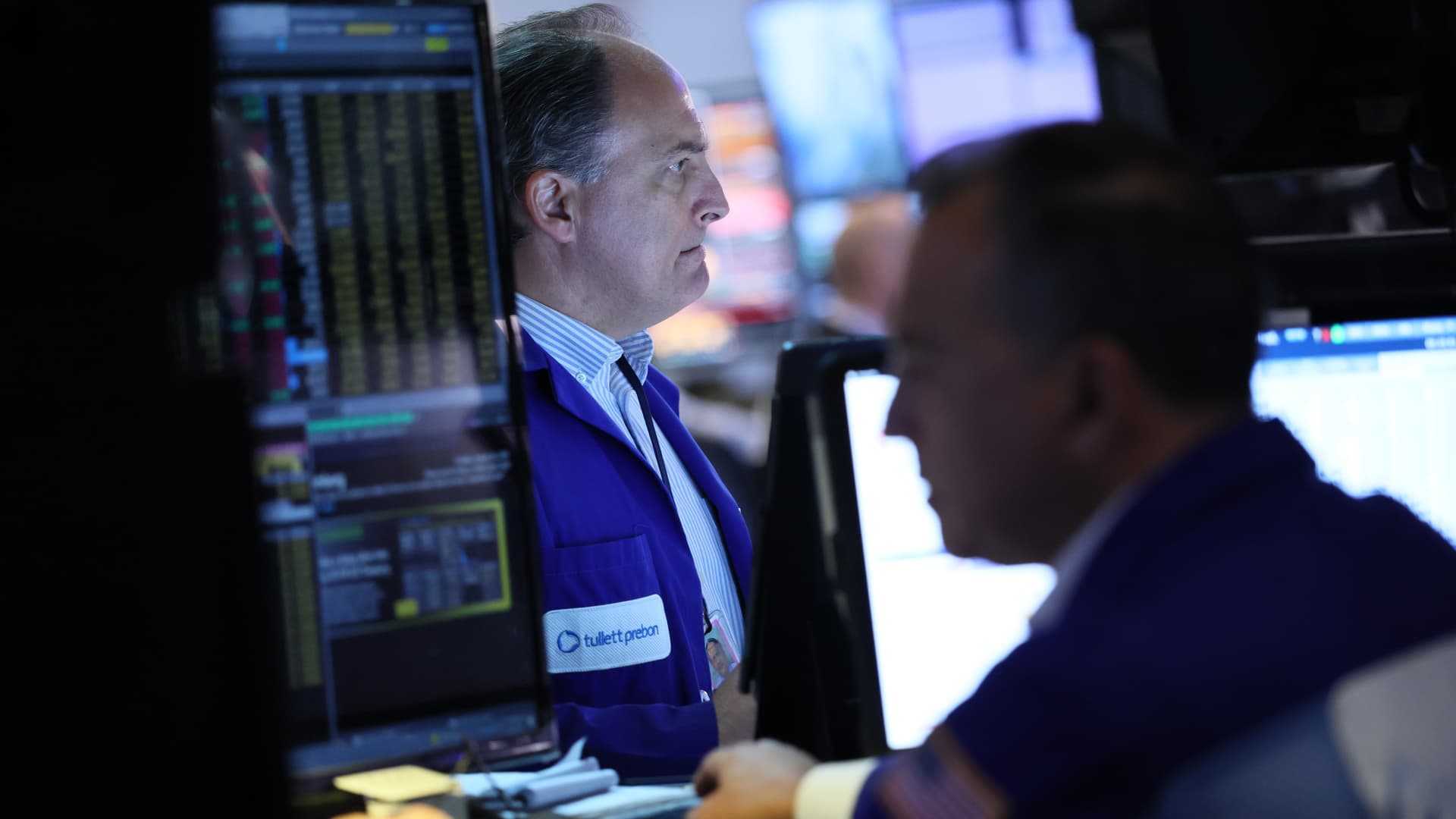Here’s our Club Mailbag email investingclubmailbag@cnbc.com — so you send your questions directly to Jim Cramer and his team of analysts. We can’t offer personal investing advice. We will only consider more general questions about the investment process or stocks in the portfolio or related industries. This week’s question: I want to ask about upside. The Club often preaches the importance of value, but many believe a $70 stock has more upside than a $700 stock. Should we disregard that completely? For context, I only invest in high growth stocks that I expect to at least triple in value. — Brian H. It is true that many people believe low-priced stocks have more potential upside than a similar company whose shares trade at a higher price. However, this view is misguided — in fact, there’s a name, or names, for it. Some call it low-price bias, or the unit bias. For the sake of clarity, we’ll go with “low-price bias” in this story. Another similar concept is the money illusion bias. Let’s unpack them real quick. The low-price bias is the belief that a low-priced stock is a better value and therefore has greater upside potential than a higher-priced one, simply due to its price. It’s basically about a stock’s price leading to misplaced expectations. The money illusion bias occurs when someone fails to distinguish between nominal value and real value — for example, in nominal terms, $1 today is the same as $1 in 1920. Of course, due to inflation, we know that in real terms, $1 today holds far less purchasing power than $1 when Woodrow Wilson was president of the United States and Central Leather was one of the 20 stocks in the Dow Jones Industrial Average . According to a range of inflation calculators, today’s $1 was worth more than $16 in 1920. In either case, the idea is that the person guilty of holding this bias incorrectly perceives the low nominal price of stock as being an indicator of value. Put another way, they believe that low price actually equals value, which is untrue. Take it to the extreme, and we land in the not-so-wonderful world of penny stocks. After all, if a lower share price correlates with higher potential returns, what could be better than a penny stock traded on over-the-counter markets? Well, we know that’s not true. Sure, some penny stocks will go on to provide legitimate, jaw-dropping returns as the management teams execute and the companies become more solidified. However, those tend to be the exceptions, not the rule. It’s like winning the lottery. Most penny stocks are penny stocks because the companies they represent are — like buying a lottery ticket — nothing more than a gamble. After all, the great companies don’t want to trade on OTC markets, which lack the same oversight and centralization of exchanges like the Nasdaq and New York Stock Exchange. Great companies want to raise hundreds of millions of dollars, if not billions, through initial public offerings and trade on the largest, most liquid exchanges in the world. In the end, if we’re talking about true investing — meaning buying a company because you believe that the underlying fundamentals will drive the stock higher, and not because you think you’ll find a fool who will simply pay more than you did for the same asset — it again comes down to valuation. So, in this current moment in the market, would you rather buy the stock of a mature, commodity-oriented company for, say, less than $40 a share, or the $500 stock of an AI enabler? Let’s consider that scenario. On Dec. 29, 2023, investors could have picked up shares of International Paper for $38.64 apiece. On the same day, you could have bought shares in split-adjusted Nvidia for $49.56 apiece. A critical caveat: Nvidia has since gone through a 10-for-1 stock split in June 2024. That means those Nvidia shares had actually cost more like $495.60 apiece on Dec. 29, 2023. So, the choice: Scoop up some shares of International Paper at roughly $39 or Nvidia for nearly $500. Don’t forget, by that time, you were already looking at a stock in Nvidia that had just returned roughly 240% over the past year alone. This example is clear-cut support for the notion that price should not take priority over almost any other metric. At the simplest level, stock splits like Nvidia’s last year can instantly reduce the price of a stock, but that mechanical adjustment in no way alters the valuation or outlook of the company. As a result, it should have no influence on your view of the stock. If your only concern was stock price, you were clearly going for the International Paper shares. However, if you were more focused on each company’s growth outlook for revenue and earnings, as well as the qualitative dynamics of the AI trade, you were definitely seeing more to like in Nvidia than the maker of cardboard boxes, paper bags, and other paper products. Fast forward to today, and if you had bought International Paper in late 2023, you would have a total cumulative return of about 34%, as of Wednesday’s close. Alternatively, picking Nvidia because you really liked its fundamental setup — and put nominal price aside — would have resulted in a return of roughly 259% in that timeframe. Confronting these facts, we once again come to the belief that price is what you pay, value is what you get. The study of behavioral biases is, perhaps, one of the most interesting areas of investing. As investors, we need to be familiar with these concepts. But more importantly, we need to work diligently to recognize when we’re guilty of committing them ourselves. In fact, studying behavioral biases was part of my Chartered Financial Analyst course curriculum, a clear sign of its importance. Warren Buffett once said that “investing is simple, but not easy.” If you ask me, this gets to the heart of behavioral finance. It can be relatively simple to explain investing concepts or teach one to read a financial statement, but acknowledging one’s own bias and adjusting behavior accordingly, however, is often anything but easy. With this one question, it is clear that you were able to identify two possible biases — even if their actual names were not familiar. That’s an accomplishment we should all be looking to replicate. Once we check that box, it’s all about ensuring we do not fall victim to them. The good news is that these two particular biases fall under the bucket of “cognitive biases,” as opposed to “emotional biases.” It’s far easier to correct a bias based on errors in how we think about things than it is to correct biases based on emotion. To correct a cognitive bias, we simply need to improve our understanding. On the other hand, correcting how we respond to things emotionally — well, there are no easy answers for that. It’s a continual learning process for all investors. (See here for a full list of the stocks INJim Cramer’s Charitable Trust.) As a subscriber to the CNBC Investing Club with Jim Cramer, you will receive a trade alert before Jim makes a trade. Jim waits 45 minutes after sending a trade alert before buying or selling a stock in his charitable trust’s portfolio. If Jim has talked about a stock on CNBC TV, he waits 72 hours after issuing the trade alert before executing the trade. THE ABOVE INVESTING CLUB INFORMATION IS SUBJECT TO OUR TERMS AND CONDITIONS AND PRIVACY POLICY , TOGETHER WITH OUR DISCLAIMER . NO FIDUCIARY OBLIGATION OR DUTY EXISTS, OR IS CREATED, BY VIRTUE OF YOUR RECEIPT OF ANY INFORMATION PROVIDED IN CONNECTION WITH THE INVESTING CLUB. NO SPECIFIC OUTCOME OR PROFIT IS GUARANTEED.




